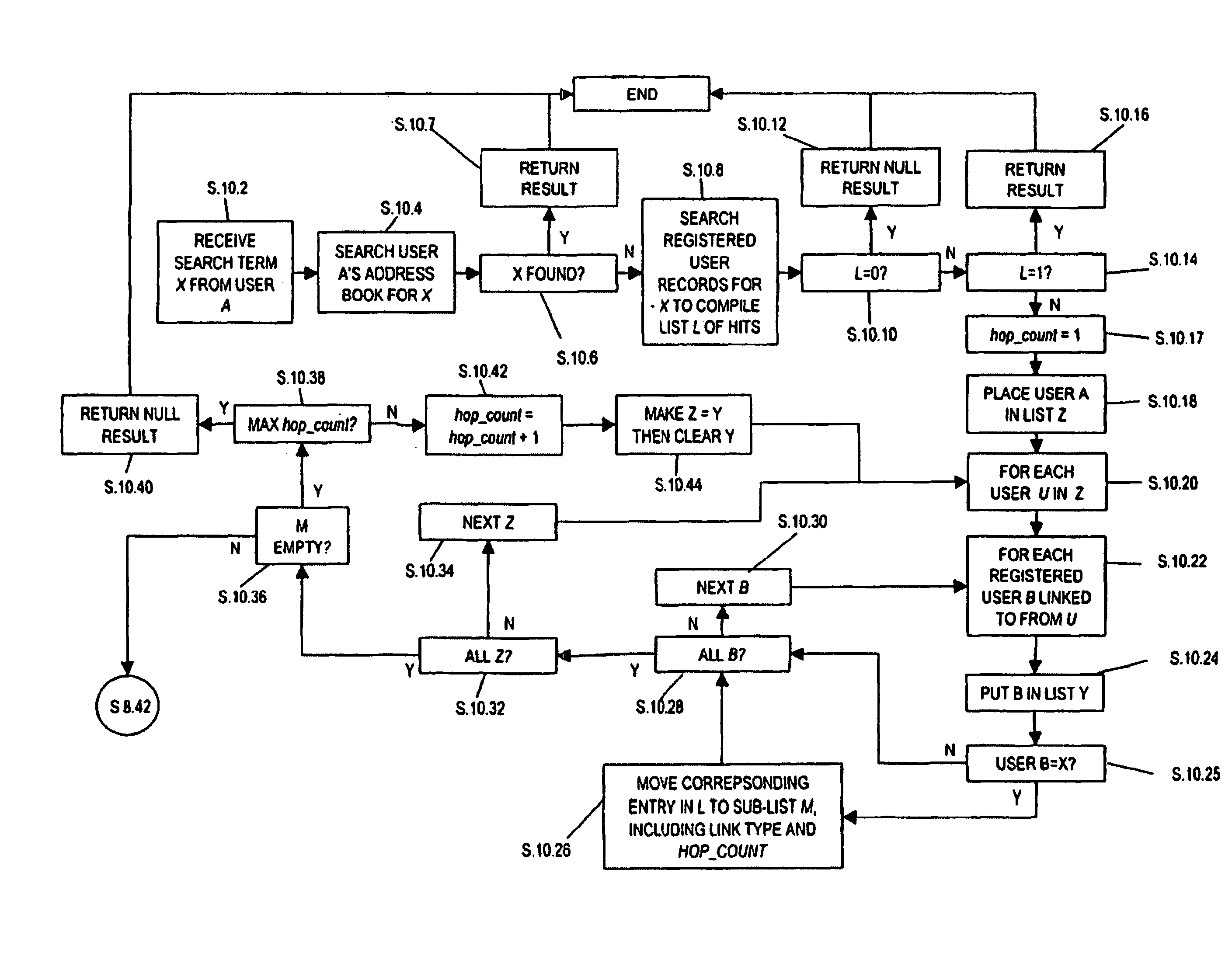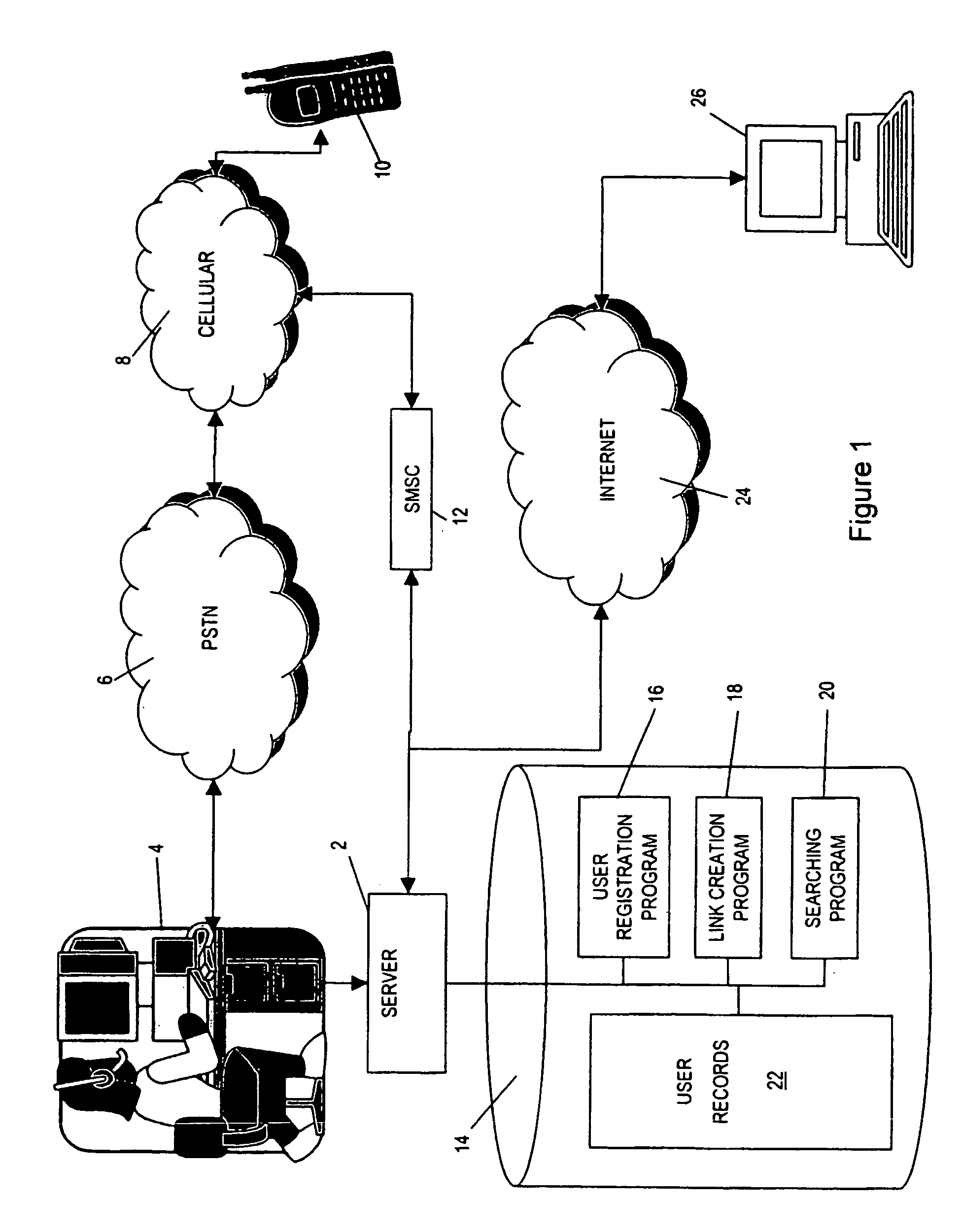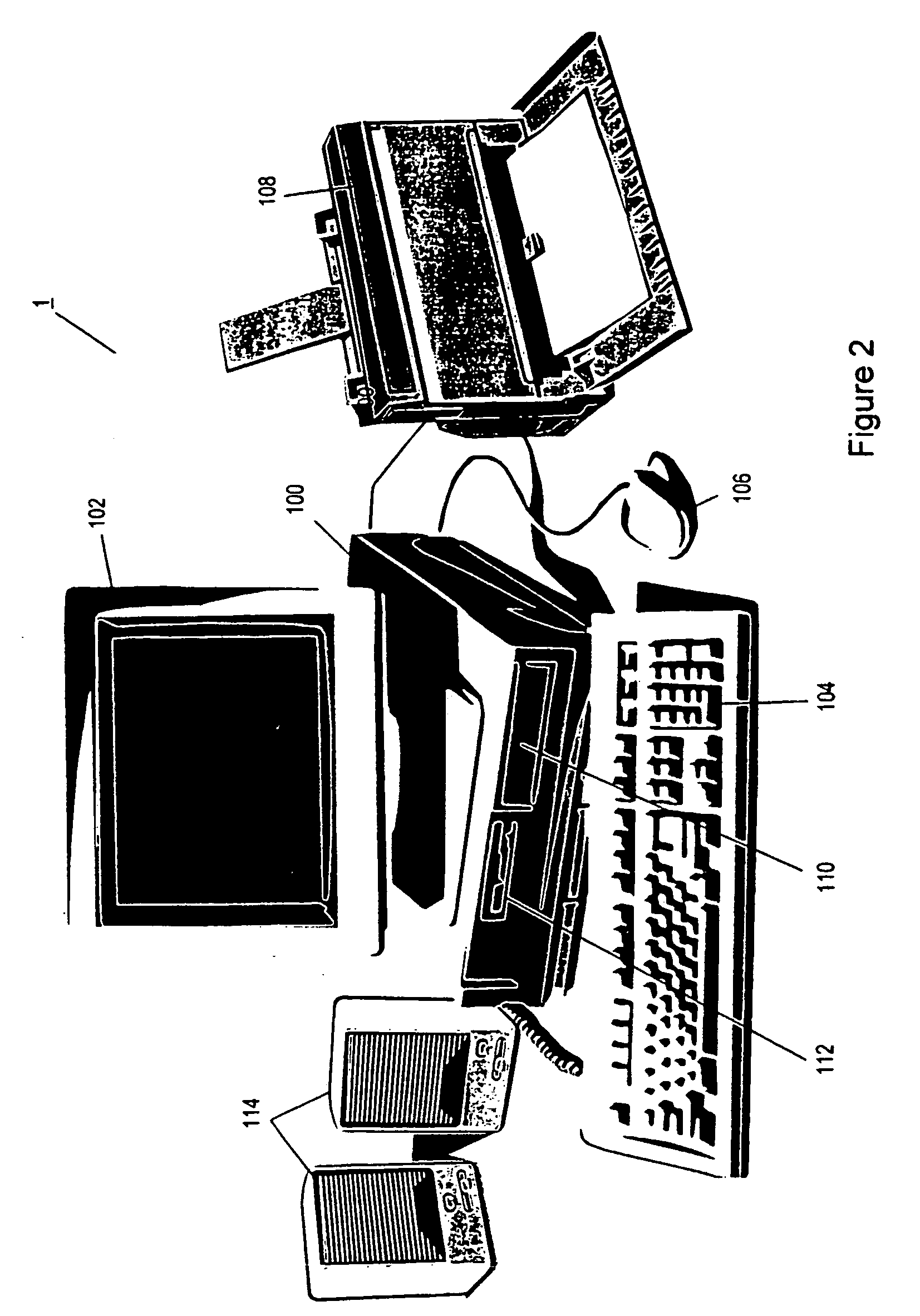Method and system for processing or searching user records
a user record and user technology, applied in the field of user record processing or user record search, can solve the problems of duplicate name resolution, difficult to create the “critical mass” of registered users necessary to provide a comprehensive dq service, and less appropriate categorisation by address, etc., to achieve the effect of refinemen
- Summary
- Abstract
- Description
- Claims
- Application Information
AI Technical Summary
Benefits of technology
Problems solved by technology
Method used
Image
Examples
first embodiment
[0132]Turning to FIG. 9, FIG. 9 illustrates the remainder of the search algorithm of the If the step 8.28 of FIG. 8 indicates that all of the user records of the registered users B linked to from the user A user record have been processed, then processing proceeds to step 8.42 wherein the list M compiled by the step 8.28 is analysed to determine whether the length is zero. If this is the case, then it means that the search algorithm has been unable to determine a match using the link information, and in this case it is proposed to connect the user making the search request to a human operator in the call centre 4 or perhaps to an interactive voice response computer, such as are known in the art for directory enquiries services. Such a connection will take place at step 8.54, whereupon the search process would then end.
[0133]If, however, at step 8.42 it is determined that the list M has one or more entries, then at step 8.44 a second evaluation is performed which checks whether the ...
second embodiment
[0157]Thus, the second embodiment acts to progressively search along the links from the user A record deeper and deeper into the network of user records until either one or more matches to the search term X are found, or until the maximum hop count parameter is reached. The search has the advantage of being exhaustive, as at every hop depth in the network every user record linked to is searched. Thus, every user record at hop depth 1 is examined first, and if no matches are found every user record at hop depth 2 is then examined. If still no match is found the search proceeds to hop depth 3, and those user records at 3 hops from the user A record are examined. If still no match is found the hop depth is incremented once again, and so on until either a match is found, or the maximum hop depth reached.
[0158]In either of the first or second embodiments of the search algorithm as described above, once a successful search has been carried out then preferably a link is formed in user A's ...
PUM
 Login to View More
Login to View More Abstract
Description
Claims
Application Information
 Login to View More
Login to View More - R&D
- Intellectual Property
- Life Sciences
- Materials
- Tech Scout
- Unparalleled Data Quality
- Higher Quality Content
- 60% Fewer Hallucinations
Browse by: Latest US Patents, China's latest patents, Technical Efficacy Thesaurus, Application Domain, Technology Topic, Popular Technical Reports.
© 2025 PatSnap. All rights reserved.Legal|Privacy policy|Modern Slavery Act Transparency Statement|Sitemap|About US| Contact US: help@patsnap.com



